Born in 1902 and died in 1984, Ansel Easton Adams was a famous American environmentalist and landscape photographer who well was known for his black-and-white images of the American West using his large-format camera. He was a relentless activist for the cause of nature and the environment.
He aimed to make people acknowledge the importance of preserving the last remaining wilderness lands. For him nature was always “a mystique: a valid, intangible, non-materialistic experience”. His work was not intended to be realistic, they were documents of nature which provided people a psychological experience of natural beauty.
He said one of the reasons for his images being in black-and-white was because he felt colour could be distracting, and could therefore distract an artist’s attention from taking a good photograph and reaching their full potential. He did however start taking colour photographs after the Kodachrome film was invented in the mid 1930s.
Adams was responsible for founding a group called Group f/64, this was an association of photographers, such as Edward Weston, who supported pure photography; photography that attempts to represent a scene or subject in sharp focus, detail and drastic tonal range. He had also developed an idea called visualisation; you picture the outcome of something before it happens, because his images didn’t turn out how he saw them in his head.

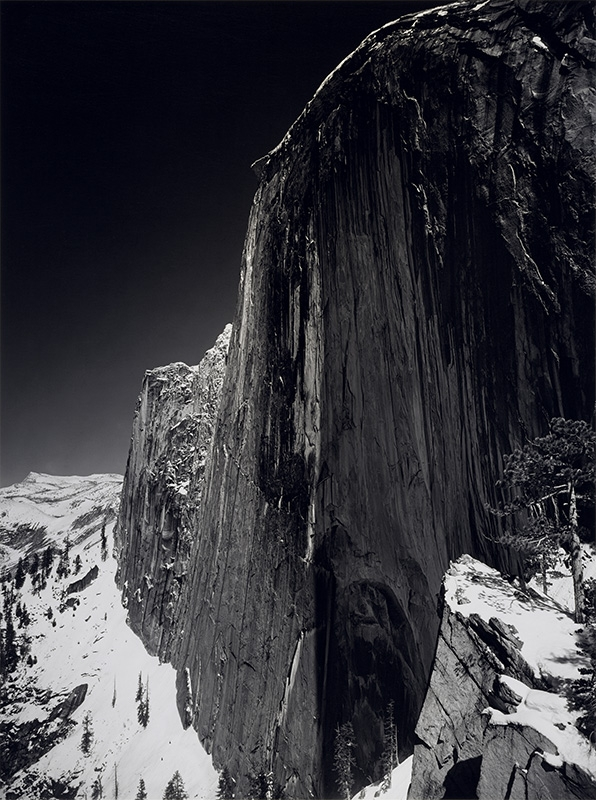
This is an example of one of Adams’ famous photographs which became his first conscious visualization. This is an image of the Half Dome in Yosemite National Park where he took the majority of his photos. At first he used a yellow lens on his large-format camera, however he swapped it for a dark red one which created much more depth as we can see in the image above.
The reason for his work being mainly based on Yosemite National Park was because for most of his life he was inspired by it’s natural beauty. He had first seen this park when he was in his childhood when his family took a vacation there in 1916. This was also when he had received his first camera, a Kodak No. 1 Box Brownie.
To create his very detailed images, Adams had used the zonal system which allowed him to creatively visualize an image and produce a photograph that matched it. He had also used darkroom techniques such as dodging and burning which changed the exposure of his images which resulted in high contrasting and tonal pieces of work.
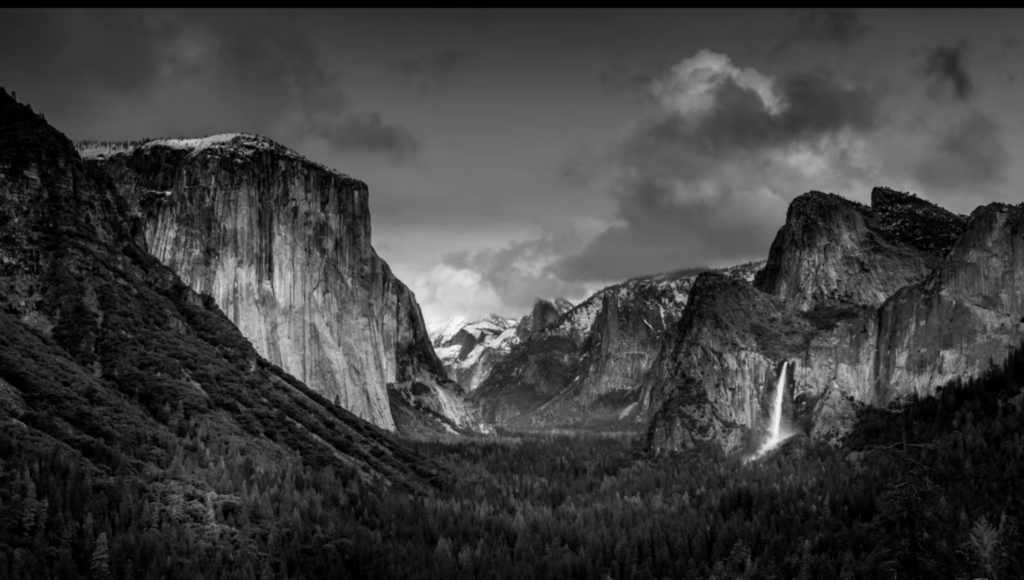
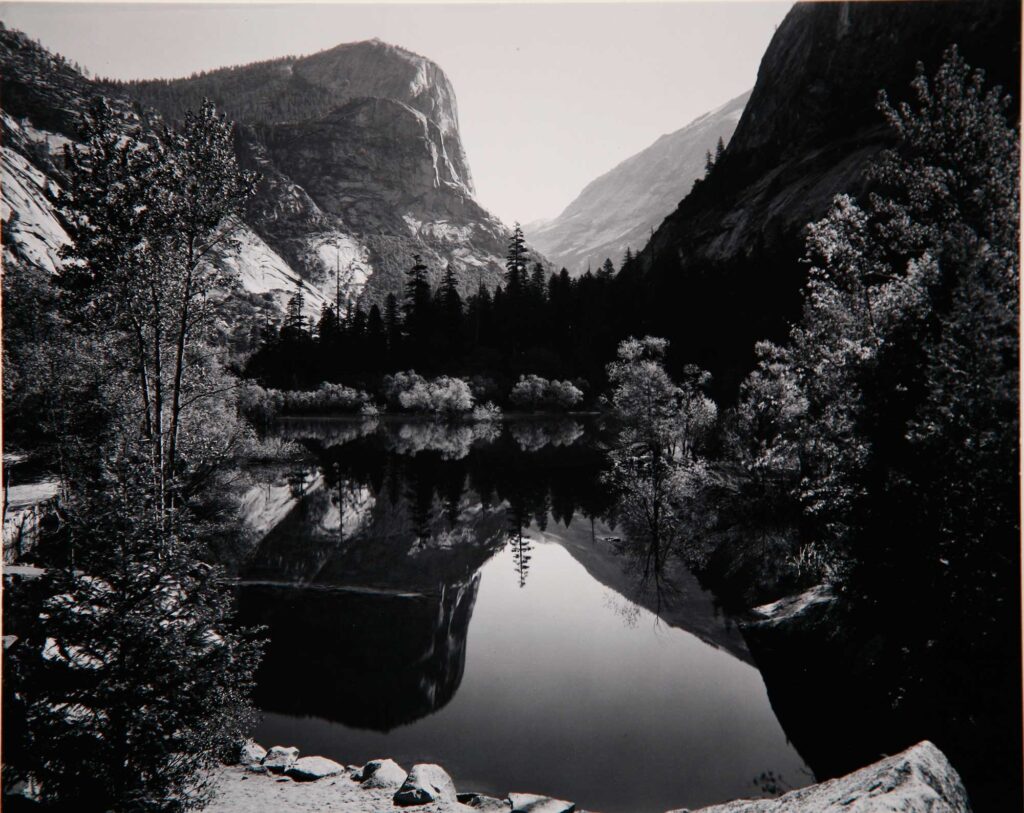

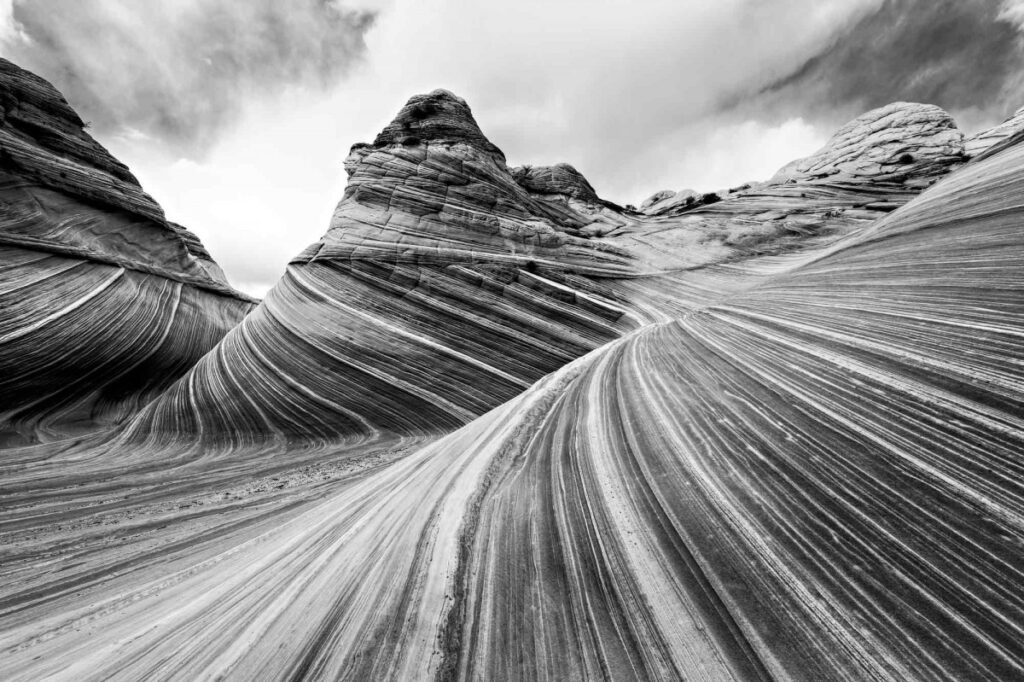
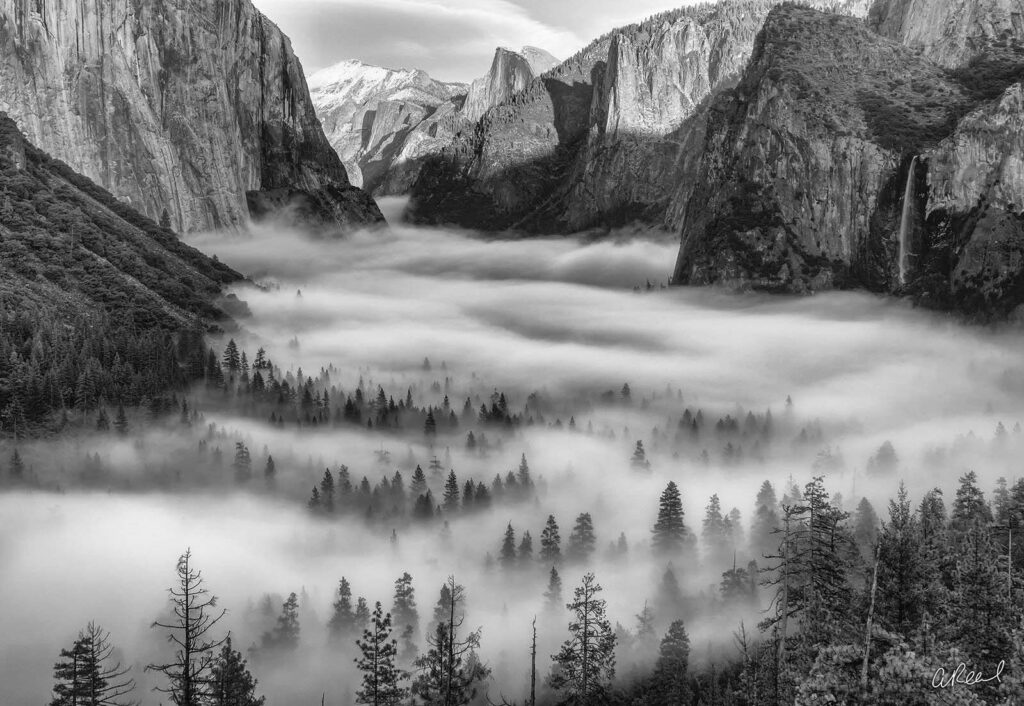
Image Analysis

I have chosen to analyse this image by Ansel Adams because I think it portrays what his style of photography looks like.
Technical – As we know Adams had used darkroom techniques and filters to play around with the exposure of his photographs and it looks like in this image he had used this technique.
We can see that natural lighting has been used in the creation of this image and from the angle that this image has been taken, we can guess that it was taken from some sort of hill, high place and or the camera has been placed in a upwards position. The image has a wide depth of field which gradually turns more faded towards the middle of the image.
Visual – We can see a large range of tonal values in this image, ranging from pure black to pure white. There is a lot of detail and texture in this image, however it gets less detailed towards the middle of the image. I think the leading lines of this image are the trees and mountains which point towards the middle of the image where we can see more mountains, snow and even clouds.
Contextual – I know that the photograph was taken somewhere in the Yosemite National Park because the majority of Adam’s work came from there as it was his source of inspiration ever since he was young.
The reason why this, and many other images, have a large tonal range and are very detailed is because Adams attempted to recreate what he had seen in his mind when he saw the landscape, he tried to convert his vision into a photograph by using filters and darkroom techniques to achieve this.
Conceptual – I think Ansel Adams took this photograph because he was inspired and motivated by the landscape: “At this location one cannot move more than a hundred feet or so to the left without reaching the edge of the almost perpendicular cliffs above the Merced River. Moving the same distance to the right would interpose a screen of trees or require an impractical position on the road. Moving forward would invite disaster on a very steep slope falling to the east”.

Select key image and produce analysis following criteria based on TECHNICAL, VISUAL, CONTEXTUAL, CONCEPTUAL
See photo literacy here:
https://www.photopedagogy.com/photo-literacy.html